LDA Design has recently announced its 2021 Bursary awards. Students from The Bartlett, UCL; University of Gloucestershire; University of Sheffield and Manchester School of Architecture have been announced as winners.
Congratulations to Anastasia Starkey, Courtney Brodrick, Farinoosh Hadian Jazy, Imogen Reeves and Xinyi Li (with Kitti Chupanich). The winners receive an award of £1,000 and the opportunity of a paid work placement in one of LDA’s eight studios.
The 2021 competition sought responses to the climate and nature crises. How could an existing place or a new piece of city better respond to today’s challenges and become more liveable for people? How can we future proof a place to cope with hotter summers or wetter winters and work much harder for people and for nature?
The winning submissions show a passion for place, from a scheme to integrate endangered Kittiwakes back into Newcastle’s waterfront to the creation of biodiverse linear urban wetlands in forgotten spaces, and the redesign of a local gem – the Honeybourne Line in Cheltenham.
Our judging panel comprised Andrew Harland, a director and LDA Design Trustee; Frazer Osment – LDA’s Chair; Mark Williams – Development and Regeneration lead; Catherine Birkin, director; Catherine Ham; Scarlett Towse; and Ben Adams, who as a winner of the 2020 competition took up a paid work placement in our Glasgow studio.
LDA’s bursary is also designed to support students who might have faced financial or other challenges to pursuing higher education qualifications.
Valley of the Birds by Anastasia Starkey
Small and gentle, the kittiwake is a gull unlikely to swoop down and away with your lunch. Dividing their time between the Atlantic and the UK coastline, kittiwakes have long had a strong community in Tyneside, in Gateshead and Newcastle. Sadly, numbers have fallen by 60 per cent since 1986. Anti-bird netting and loss of habitat has helped make Tyneside an inhospitable environment. Anastasia’s Valley of the Birds seeks to turn this around by making Newcastle’s waterfront a safe and inviting place for nesting birds, better connecting people to Newcastle’s wildlife and ecology. A man-made kittiwake wall includes ledges for nests and a boardwalk creates an immersive visitor experience.
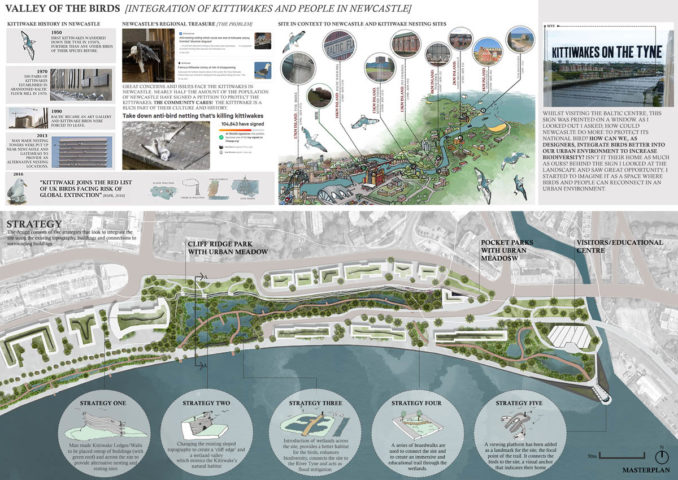
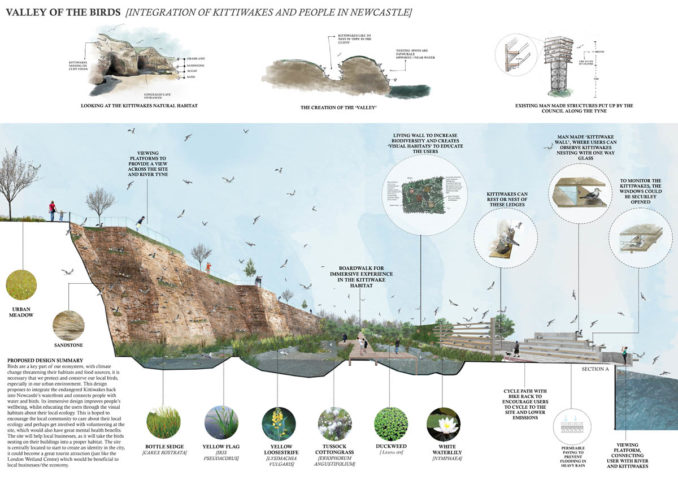
The Honeybourne Line by Courtney Brodrick
Cheltenham’s leafy Honeybourne Line is a disused railway track now favoured by cyclists, runners and walkers. The route connects one side of Cheltenham to the other, from the rail station towards the town centre. The line is also an important wildlife corridor – and a colony of Small Blue butterflies has been seen along the trail. The council has been working to make the Line more inviting, but Courtney believes there’s still more that could be done to realise its potential. Redesigning the line could enrich local ecology, create new habitats and a more accessible community space. Planting would support UK moth and butterfly species, and bees.
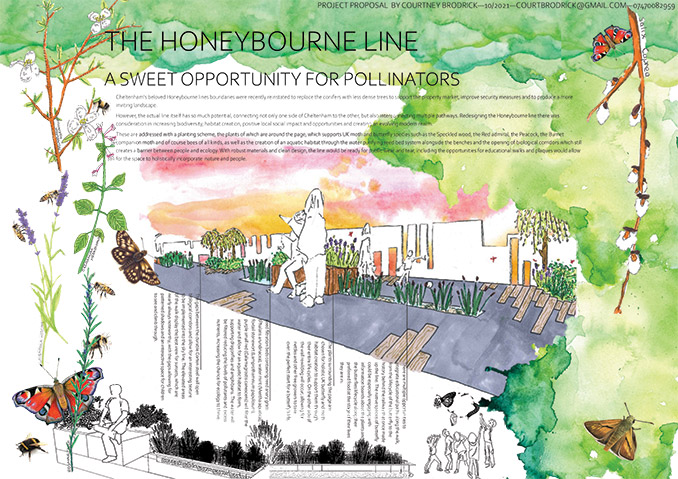
Terrain Vague by Farinoosh Hadian Jazy
This entry seeks to make better use of forgotten city landscapes to lessen the impacts of climate breakdown, using, for example, the edges of new buildings or roadside verges, or what Farinoosh refers to as terrain vague. A consequence of urban hard surfaces is rainwater runoff. This proposal looks at creating linear urban wetlands, using Here East in Queen Elizabeth Olympic Park as a trial site. The proposed wetland features clear pathways, flexible wooden structures and enhanced biodiversity to provide moments of delight and engagement.
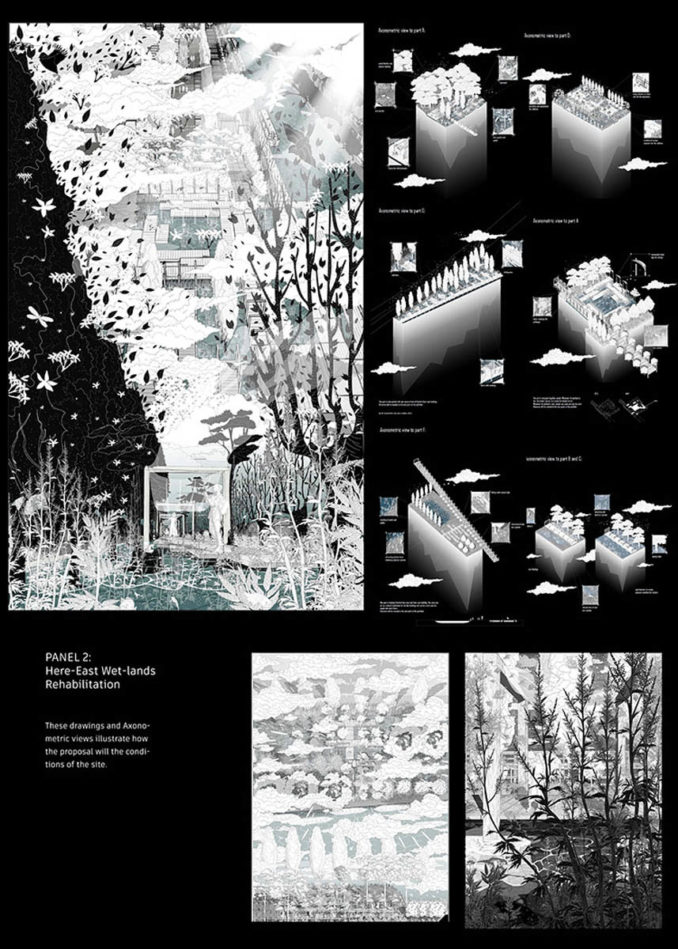
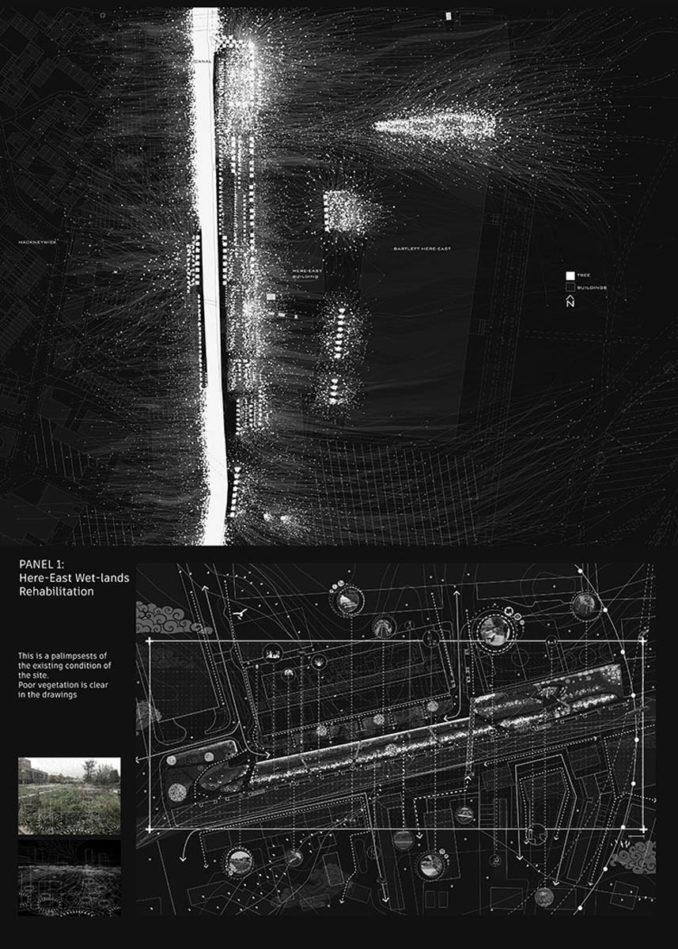
Something Borrowed, Something Blue by Imogen Reeves
Imogen sets out a vision for a space that blends the tranquillity of a pre-industrial rural idyll with the life-giving energy of the modern city. The result is a people-focussed utopia, with locally produced food and doorstep nature. Her vision draws on heritage design such as the Garden City Movement. Critical is the densification of urban spaces to make safer, more sociable environments, improving the quality of life for children and caregivers, and freeing up space to let more nature in, including with the introduction of a public cable car system.
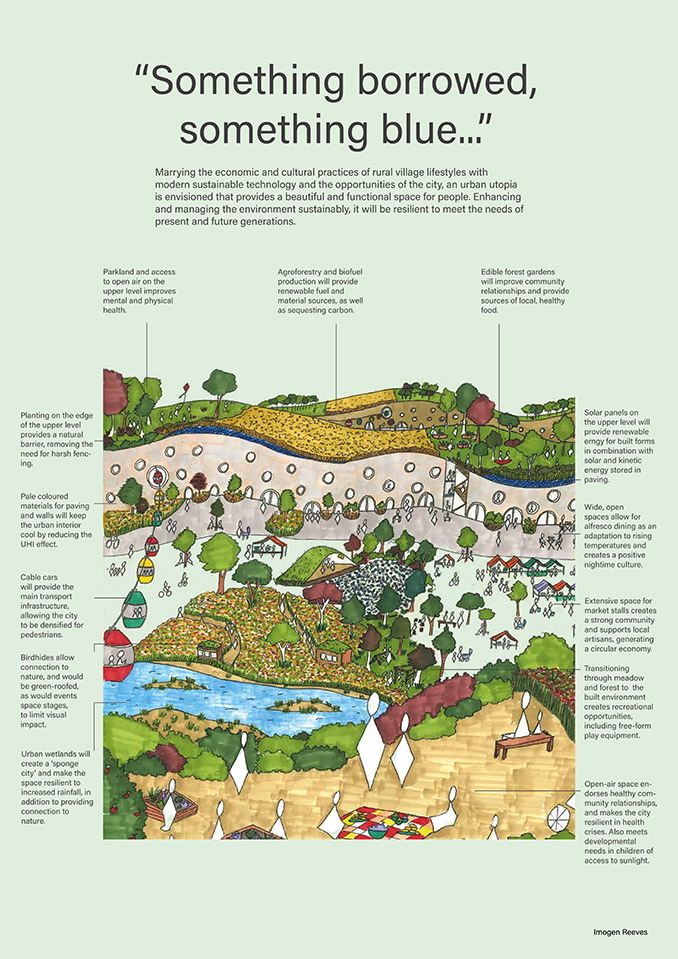
Unbox Burnley by Xinyi Li with Kitti Chupanich
Burnley’s town centre serves a population of around 89,000. Xinyi and Kitti propose using modular container units to reclaim and revitalise an underused part of the town, creating a lively place for local residents by establishing new uses and drawing footfall into the centre. Unbox Burnley features seven container prototypes which can be positioned to define public realm and provide community kitchens; grow hubs; low-cost retail for start-ups; event space and recycling workshops for reuse and repair.
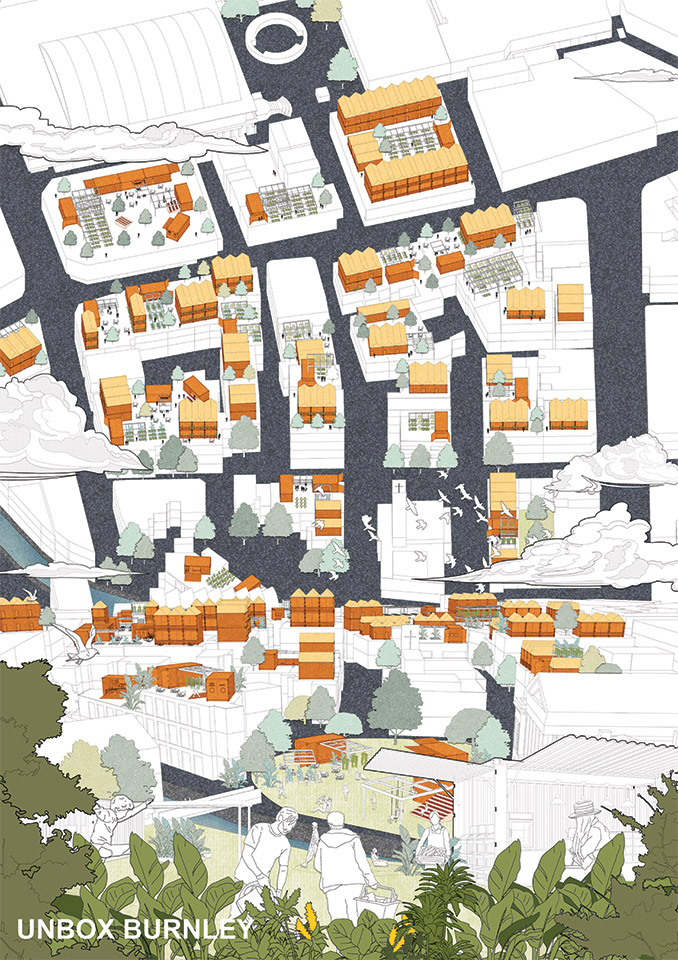
Images Credits: as titled
